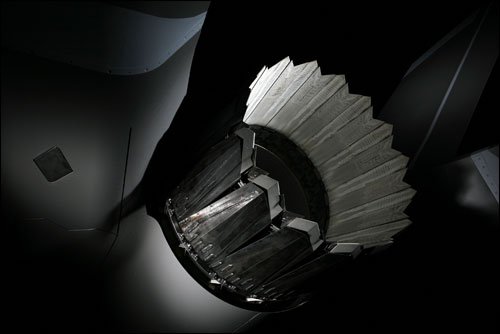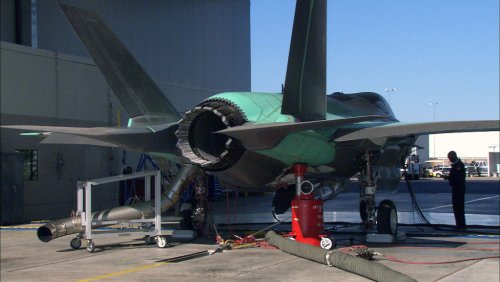lantinian
ACCESS: Top Secret
- Joined
- 24 March 2007
- Messages
- 539
- Reaction score
- 174
Sprey and Wheeler argued in a editorial published on Sept. 10, that the F-35 which weighs in "at 49,500 lb air-to-air take-off weight, with an engine rated at 42,000 lb of thrust, will be a significant step backward in thrust-to-weight ratio for a new fighter."
These guys obviously compare different configurations under different circumstances.
F-35A has empty weight is 29,036 lb
Add max internal fuel 18,480 lb,
4xAMRAAMs 1884 lb,
Gun+Amunution 500 lb,
pilot at 250 lb and
you have a total of about 50,000 lb.
Best information for the power of F135 is 43,000 lb.
A simple math give us a trust to weight ration of 0,86.
The fighter with the best trust to weight ration the F-35 is replacing will be the F-16. If the AirForce does not buy the F-35, they will need to buy more F-16s like those they sold to UAE - the F-16E/F
F-16E/F empty weight is 22,000 lb.
Add max internal + external fuel(3x fuel tanks) 20,760 lb,
4xAMRAAMs 1884,
Gun+Amunition 550 lb,
pilot at 250 and
you have a total of 45,000 lb .
With max trust of the F110-GE-132 at 32,500 lb,
we have a trust to weight ration of 0,72
So, in a similar long rage intercept mission with similar weapons, F-35A vs F-16E/F goes as follows.
Trust to weight ratio: 0,86 vs 0,72
Max speed: Mach 1,6 vs Mach 0,96
Sustained G: 9 vs 6-7 (
External Drag and RCS: Low vs Huge
It's visible to the naked eye that F-35 brings improvement in every performance category and quantum leap in some.
To me, the best way to compare pure fighter performance potential is to look at trust to weight ratios of military power vs aircraft empty weight. Configurations can very and often lead to misleading conclusions.
In that scenario F-35 gets 1.07
which is more than F-16E/F with 0,86
or F-16A with 0,90.
Even SU-35BM has just 1,00
The top players in performance being
Eurofighter with 1,26
and F-22A with 1,33
So, unless you load the F-35 with a lot more payload/fuel than the F-16 it will always have more power and will always fly in cleaner aerodynamic configuration.
The Thunderbirds will be happy to transition to the new plane if they have the chance. But thats unlikely to happen for many years.


